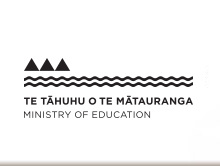Whiria (wh. 26–31)
He whakarāpopoto
I tēnei wāhanga ka pupū ake te riri i waenganui i a Kaharau rāua ko Uenuku-kuare. Nā Rāhiri te riri i whakatau. Nāna anō i whakarite he tikanga hei wehewehe i te rohe pōtae. Ka hanga te iwi i tētahi manu aute. Ko ngā wāhi e tau ai te manu aute te wehenga o te rohe.
Summary
This section the anger between Kaharau and Uenuku-kuare erupts. Rāhiri quells the anger. He arranges to divide the district. The iwi constructs a kite. The places where the kite lands will divide the district.
| Te momo reo tuhi Language style |
|
|---|---|
| Ētahi āhuatanga o tēnei momo reo tuhi Features of this language style |
|
I te Ākonga e Pānui ana i te Pukapuka
During Reading
He Ngohe
Anei ētahi whakaaro mō ētahi ngohe e hāngai ana ki ngā kōrero katoa o roto o Whakawhiti 33, Tūhoronuku. Ka taea e te pouako ēnei te whakamahi kia tutuki ai ngā whāinga whakaako me ngā whāinga ako. Ka taea anō e ia te rāwekeweke ēnei whakaaro kia hāngai ake ki ngā whāinga ako me ngā hiahia o ngā ākonga.
Learning Activities
Here are some ideas for learning activities aligned with the writing in Whakawhiti 33, Tūhoronuku. Pouako can use these to help achieve their teaching and learning objectives. These ideas can be adapted to align with the learning objectives and needs of the students.
1. Mā ngā ākonga e tautohu he rerenga kōrero reo tohu wāmua mai i te kōrero nei.
Students identify past tense expressions within the text.
2. Mā ngā ākonga hei tuhi ngā kīanga e whai ake nei ki roto i tētahi rerenga kōrero.
“E kī, e kī!”
“Ehara! Ehara!”
“E iro, e iro!”
Students will write sentences containing the following kīanga.
“E kī, e kī!”
“Ehara! Ehara!”
“E iro, e iro!”



